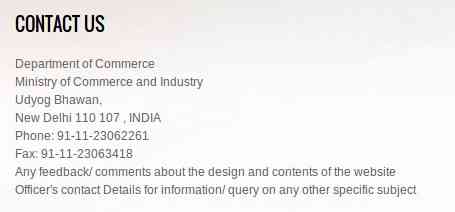How Indian Rulers Abuse Human Rights in the Digital Space
The digital interfaces to provide citizen services in India are either crude or rude. Instead of treating digital users with respect, they tend to insult them.
By Rakesh Raman
Now it’s a kind of universal truth that Indian politicians and bureaucrats are crooks of the first order. But few know that most excesses they commit on common citizens are because of their illiteracy and incompetence.
Particularly, when it comes to a modern subject like technology or digital media, an Indian politician or a bureaucrat is as primitive as a jungle ass.
Today, with the proliferation of digital media, their naivety is becoming a pain in the neck for citizens who want to use digital channels to avail government services because technology adoption in the country is at a pathetic level.
According to The Global Information Technology Report 2014 released by the World Economic Forum, India’s rank is a poor 83 in the world. That means India is still tottering in the Stone Age, while the world is galloping in the Information Age.
Although the Indian governments squander public money worth billions of dollars in the name of technology introduction, their tech interfaces to provide citizen services are either crude or rude. Instead of treating digital users with respect, they tend to insult them.
[ No Democracy in India. It Is Parliamentary Dictatorship. ]
As a result, they abuse users’ rights to information and communication which are their fundamental rights because they are human beings living in a knowledge society.
This may not be a traditional form of human rights violation. But it’s certainly the worst form of abuse in the digital world where virtual interaction is inevitable to ensure efficient and corruption-free delivery of citizen services.
Role of a Government Website
Today, a website is the basic digital interface that is supposed to connect a common citizen with the government. But the government websites in India are made using archaic static technology and they lack information. Plus, the government workers who sit behind these sites don’t possess communication skills to interact with the public.
The following examples of sites will explain the severity of communications-related human rights violations that Indian governments at the Center and State levels commit against the citizens.
Website Examples
Let’s first go to the website of Department of Commerce, Ministry of Commerce and Industry, Government of India.
If you want to send an e-mail to this department, you can’t because it has not provided the e-mail link under its “Contact Us” section. The only way you can contact this department is via Phone or Fax. Most users don’t have fax machines.
Ministry of Commerce and Industry
And if you’re lucky enough to get through the phone line, either you will be kept on hold or the person at the other end will not be able to understand and resolve your problem.
But this particular Commerce Department has gone a step further to agonize you. Instead of providing a simple e-mail in its “Contact Us” section, it has put a couple of weird sentences, which are:
“Any feedback/ comments about the design and contents of the website
Officer’s contact Details for information/ query on any other specific subject”
Only God knows what they are trying to convey and how they make sense in the “Contact Us” section.
Now let’s try the Delhi Government website to know about the Chief Minister and contact him.
You can’t. Even after two weeks of becoming Delhi’s Chief Minister, Arvind Kejriwal could not provide his profile for the State website and only his picture is hanging in a corner with the message: “About Our Honorable Chief Minister Content Awaited … “
Delhi Chief Minister
But the bigger trouble is that there is no “Contact Us” section on the Delhi Government’s website. You can’t send an e-mail to Delhi Government.
Similarly, you will be disappointed if you tried to contact the Ministry of Micro, Small & Medium Enterprises. Although it calls itself “an ISO 9001:2008 Certified Organisation,” it won’t allow you to contact it, as it doesn’t have a “Contact Us” section on its website.
Ministry of Micro, Small & Medium Enterprises
Digital Damage
These are just a few indicative examples. The condition of other government websites is equally bad if not worse. And the same is true for the social media properties that different government departments have created. Indian government workers are not yet equipped to handle social media because to work in this interactive field employees need to acquire totally new skills.
Even on those online government interfaces where e-mails or online contact forms are provided, you can’t expect a response from them. These contact points exist only to receive your information and you can assume that your messages are going in a digital junkyard because government workers won’t respond.
[ Digital Damage in India: Web Perils of Information and Broadcasting ]
While the Indian governments have been squandering huge public money in the name of creating e-governance sites, the outcome falls somewhere between painful and pathetic.
Moreover, there is no mechanism available with the government to assess the utility of a Web interface and measure its impact on the quality of citizen services. As a result, citizens are living in a state of statelessness, which is a gross human rights violation because in this state, there is no connection between an individual and the state.
E-Governance: What Needs to be Done
To overcome the communication challenges and provide effective digital interfaces to citizens so they could freely interact with the government, the Indian governments must take the following steps:
- Revamp all the government websites with proper online user experience (UX) designs and content.
- Launch publicity campaigns to encourage citizens to use online platforms to interact with the government.
- Identify trainable employees in each department and train them with digital media and communication skills.
- Make digital communication a key result area for employees and evaluate their performance only against the level of communications they handle for providing citizen services.
- Set up digital communication kiosks and start mobile offices managed by digitally qualified workers in each village, town, and city where even illiterate citizens could go and register their requests for the government.
- Count the number of digital requests received and resolved periodically in each department.
- Measure the impact of digital communications empirically using quantitative and qualitative methods.
These steps are inevitable not only to improve the quality of citizen services, but also to curb government corruption. The reduction in human interaction and increased adoption of digital systems will reduce the chances of corruption.
And with the help of effective digital interfaces, citizens will feel a sense of belonging with the government as their rights to information and communications will be protected. That’s the whole point.
By Rakesh Raman, the managing editor of RMN Company
You also can read: More Articles by the RMN Editor, Rakesh Raman
















